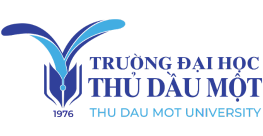References
A.Kwaghger and J. S. Ibrahim (2013). Optimization of Conditions for the Preparation of Activated Carbon from Mango Nuts using HCl. American Journal of Engineering Research, pp, 74 - 85.
Ahmad. R., Kumar. R., Haseeb. S. (2012). Adsorption of Cu2+ from Aqueous Solution onto Iron Oxide Coated Eggshell Powder: Evaluation of Equilibrium, Isotherms, Kinetics, and Regeneration Capacity. Arabian Journal of Chemistry, 5(3), 353-359.
B.Nasernejsf, T. Esslam Zadeh et al. (2004). Camparison for biosorption modeling of heavy metals (Cr (III), Cu (II), Zn (II)) adsorption from wastewater by carrot residues. Process Biochemistry, 40, 1319–1322.
Badruddoza, A. Z. M., Tay, A. S. H., Tan, P. Y., Hidajat, K., & Uddin, M. S. (2011). Carboxymethyl-β-cyclodextrin conjugated magnetic nanoparticles as nano-adsorbents for removal of copper ions: Synthesis and adsorption studies. Journal of Hazardous Materials, 185(2-3), 1177–1186.
Ben-Ali, S., Jaouali, I., Souissi-Najar, S., & Ouederni, A. (2017). Characterization and adsorption capacity of raw pomegranate peel biosorbent for copper removal. Journal of Cleaner Production, 142, 3809–3821.
C. A. Toles, W. E. Marshall and M. M. Johns (1998), Phosphoric acid activation of nutshells for metals and organic remediation: process optimization. Journal of Chemical Technology and Biotechnology, 72, pp, 255-263.
Gupta, V. K., & Ali, I. (2000). Utilisation of bagasse fly ash (a sugar industry waste) for the removal of copper and zinc from wastewater. Separation and Purification Technology, 18(2), 131–140.
Imamoglu, M., & Tekir, O. (2008). Removal of copper (II) and lead (II) ions from aqueous solutions by adsorption on activated carbon from a new precursor hazelnut husks. Desalination, 228(1-3), 108–113.
J.W. Moore, S. Ramamoorthy (1984). Heavy Metals in Natural Waters: Applied Monitoring and Impact Assessment. Springer, New York, p, 69.
Le Huy Du et al. (1981). Study on activated carbon pressed tablets used in gas masks. Report on the first National Chemistry Conference. Hanoi.
Mahiya. S., Lofrano. G., Sharma, S. (2014). Heavy Metals in Water, Their Adverse Health Effects and Biosorptive Removal: A Review. Int. J. Chem, Vol. 3, pp, 132-149.
Mast, Austin R.; Willis, Crystal L.; Jones, Eric H.; Downs, Katherine M.; Weston, Peter H (2008). A smaller Macadamia from a more vagile tribe: inference of phylogenetic relationships, divergence times, and diaspore evolution in Macadamia and relatives (tribe Macadamieae; Proteaceae). American Journal of Botany 95 (7), 843–870.
Nguyen Cong Tan (2009). Macadamia plantation. Hanoi: Agricultural publisher.
Okman, S. Karagoz, T. Tay and M. Erdem (2014). Activated carbons from grape seeds by chemical activation with potassium carbonate and potassium hydroxide, Applied Surface Science, vol 293, pp, 138 – 142.
Rakesh Kumar et al (2013). Macadamia Nutshell Powder Filled PolyLactic Acid Composites with Triacetin as a Plasticizer. Journal of Biobased Materials and Bioenergy, vol. 7, pp, 541 - 548.
Yan-Juan Z, X.Zhen – Jiao, D.Zheng – Kang, L.Meng, and W.Yin (2014). Effects of steam activition on the pore structure and surface chemistry of activated carbon derive from bamboo waste. Applied Surface Science, vol.315, pp,279 – 286.























